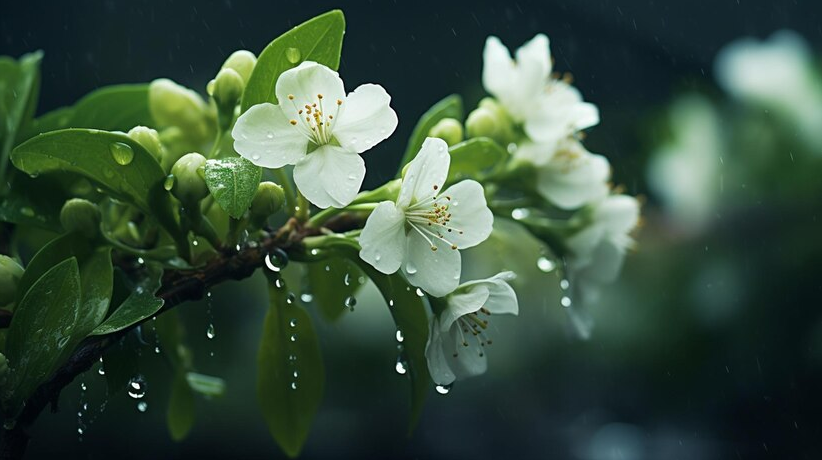
Red roses might be the most classic option for Valentine’s Day, but have you ever really stopped to smell them? Contrary to the popular assumption, they’re often not all that fragrant, owing to the fact that they’re commonly bred for aesthetic perfection at the expense of their natural perfume. Plus, a bouquet of cut stems dies within days — not very romantic.
Another option? Gift a plant with showy blooms instead. These five options are likely to be much more fragrant than your typical grocery store bouquet, and with the proper care, they’ll last for years.
1. Mini-rose

This miniaturized shrub rose blooms in a wide range of colors, from pure white to peach to magenta to deep red. Its foliage is dense, dark and lustrous. For an easy-to-grow cultivar, Dave Whitener of the National Gardening Association recommends “Gigi.” “It’s one of the most popular mini-roses,” he says, “and is strikingly beautiful in addition to being fragrant,” with bold red and white stripes.
Depending on the cultivar, a mini-rose usually tops out at one to two feet, making it a useful container or low-hedge plant. In plant-hardiness zones 4 or higher (check the Agriculture Department’s map here), you can plant them outside after regular frosts have passed, in a spot that gets at least six hours of daily sun. Like their larger cousins, mini-roses need a lot of nutrients to create their beautiful blooms, so plant them in compost-rich, well-draining soil and feed them with organic fertilizer once a month during spring and summer.
Indoors, mini-roses require sun in a south-facing window and good humidity so their leaves don’t drop; water them once the soil has dried a bit. Also, keep in mind that they’ll suffer if placed in the path of a cold draft or heater vent.
2. Gardenia

Few plants are more fragrant than the gardenia, often used for weddings. In Victorian times, gifting one meant you were telling the recipient “I love you,” so it’s an appropriate choice for Valentine’s Day.
These small shrubs grow in a tight mound of glossy leaves with silky, white flowers that cast an alluringly sweet scent. Indoors, they like bright, indirect light and humid air. “Gardenias prefer acidic soil, with a pH between 5.0 and 6.0, and they like an inch of water per week,” Whitinger says. Also, gardenias suffer near drafty windows. In winter, a grow light will help keep them healthy.
Like a mini-rose, a gardenia can be grown outside in a container, or if you live in zones 8 through 11, in the ground. When planting, choose a location with as much sunlight and warmth as possible. Like roses, these tropical natives need fertilizer to produce their lovely flowers. If you live in the northern United States, you’ll need to protect them from frost and cold winds.
3. Lavender

You may not think romance when you think of lavender, but this Mediterranean native has a rustic beauty and spicy, elegant perfume. “Lavender aromas are widely recognized as having calming and relaxing properties,” Whitinger says, “which makes it a wonderful stress-reducer after a long day.” Some varieties, such as French or jagged lavender, are downy soft, adding to their sensuality. Touch this perennial, and your hands will smell clean and cool.
Overall, the key to growing lavender is light. It needs at least six hours of full sun, indoors or out. Outside, plant the two-foot-tall perennial near the border’s front in well-draining, lowly fertile soil. Lavender can tolerate wind and drought (it grows in the stony hills of Provence), but it doesn’t like severe pruning. Don’t cut its woody branches; only trim the spent green stems, which will encourage more pretty blooms.
4. Orchid

For an especially elegant gift, try an orchid, “particularly Moth orchid,” says Justin Hancock, a horticulturist at online plant seller Costa Farms. “It’s an easy-growing plant, making it a nice choice for plant lovers, but it’s also a good first-time plant because it’s pretty forgiving about light and water.”
Moth orchids such as Phalaenopsis Schillerian sport sculptural pink flowers that bloom on delicate, wandlike stems. The flowers last for several weeks, casting a faint rose scent. Another solid beginner’s choice is a corsage orchid (cattleya bicolor). This Brazilian native has wiggly, magenta-bronze flowers and emits a strong fragrance.
Orchids, which grow on trees in the wild and absorb moisture from the air via their roots, prefer to grow in loose bark rather than soil. Moth orchids prefer bright light. In lower lighting, Hancock says, they may not bloom as robustly. They should be watered every week or two.
5. Jasmine

While some cultures believe jasmine (jasminum) to be an aphrodisiac, there’s little scientific evidence to prove that’s true. However, one 2005 study from researchers at Kyoto University shows its scent in tea relaxes the body. Cultivars such as winter or pink jasmine grow in lush, robust shapes, with tumbling stems and blooms that emit a fresh perfume.
To grow jasmine indoors, place the plant in a window where it can get several hours of bright, indirect light. Either mist it regularly or run a humidifier nearby to add moisture to the air. Jasmine needs darkness and chillier temperatures in winter to set buds, so store it in a cooler room until spring, then fertilize.
In zones 8 or higher, you can plant this evergreen vine outside in the garden. In colder areas, grow it in pots that can be stored under cover or in a garage during winter. These ramblers thrive in sun and warmth, but if grown in hot desert climates, they appreciate afternoon shade. Plus, they need a structure to climb on. A trellis or arbor near a patio is ideal for showing off their starry flowers and soaking in the fragrance.










